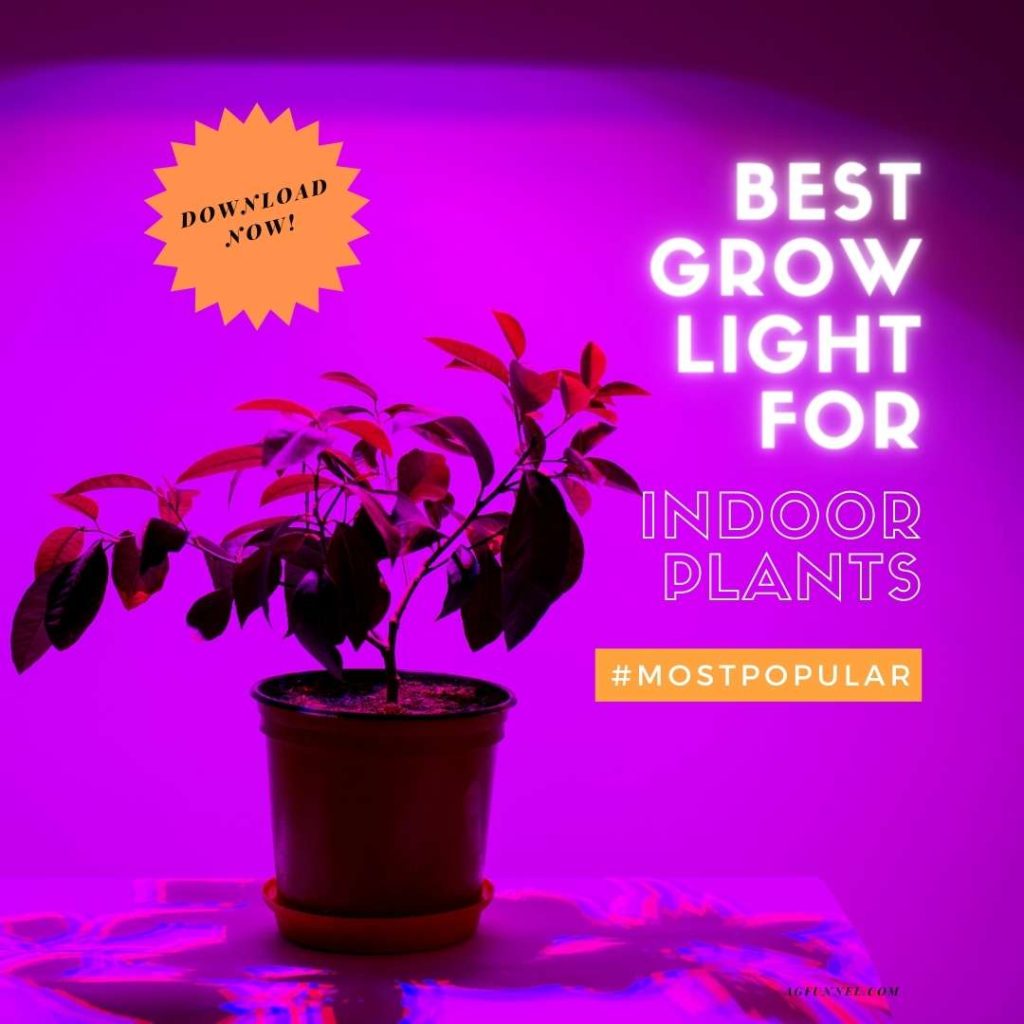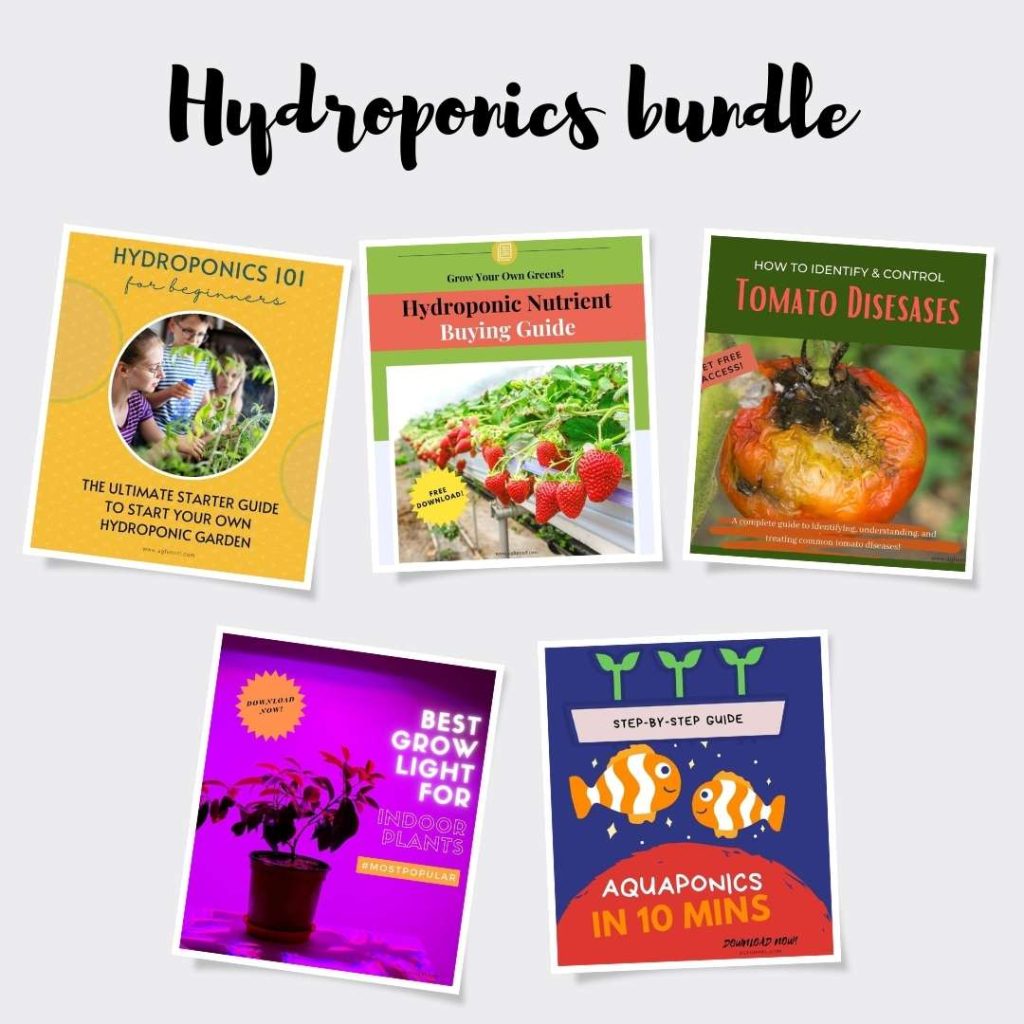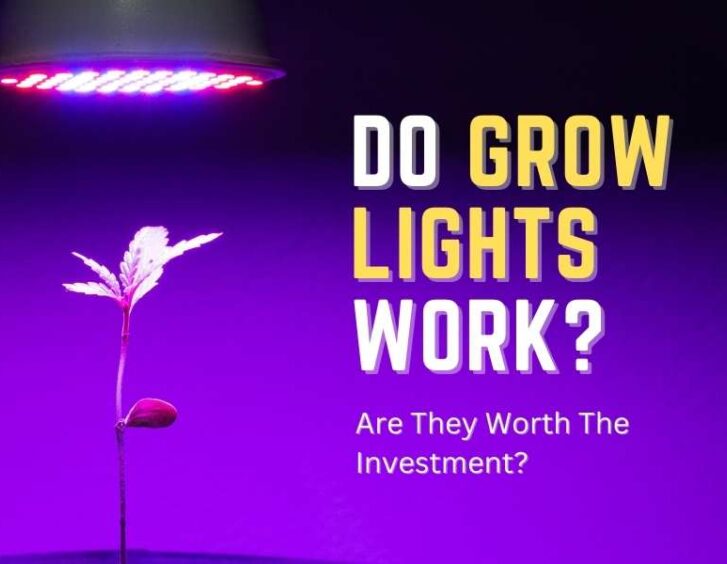Most people grow plants indoors at some point in their lives. Plants need light to grow and thrive, whether it’s a few herbs on the windowsill or a full-blown garden. Many people turn to grow lights to provide supplemental light for their plants. But do grow lights work? How are grow lights different from regular lights, and are they worth the investment? This blog will answer all your grow light questions and help you determine if grow lights are right for your plants.
What are grow lights?
The plant uses sunlight to grow through a process called photosynthesis. Photosynthesis is the process in which plants use energy from light to produce food. Photosynthesis occurs most efficiently within a certain range of light wavelengths. This includes mostly blue and red light, with some green and yellow light.
Grow lights are designed to emit a spectrum of light within this range to mimic natural sunlight, giving plants the type of light they need for optimal growth.
Grow lights have many benefits, including growing plants indoors, controlling light intensity and duration, and growing plants during off-seasons or in regions with limited sunlight.
.jpg)
How much light do plants need?
The amount of light needed for optimal growth varies by plant species. Some plants, like succulents, can grow well with low light levels. Other plants, like tomatoes, require high light levels to grow properly.
It’s important to research the light needs of your specific plants and provide the appropriate grow light setup.
Another factor to consider is the distance between your grow light and the plants. The closer the grow light is to the plants, the higher intensity of light they will receive. Also, it’s important to keep grow lights at the proper distance to avoid burning or stunting plant growth.
Can grow light replace sunlight?
Grow lights are not a replacement for natural sunlight. The sun emits a much wider spectrum of light, including UV and infrared light, which grow lights cannot replicate.
However, grow lights can supplement natural sunlight and provide the specific wavelengths needed for photosynthesis. Recent advances in growth light technology have allowed growing lights closer to replicating natural sunlight.
Full spectrum grow lights provide a wider range of light, including UV and infrared, and mimic natural sunlight even more closely. However, it is still important for most plants to receive natural sunlight when possible.
How are grow lights different from regular lights?
Regular lights, such as incandescent or fluorescent lights, may not provide the same benefits for plant growth. Grow lights are specialized types of lightbulbs that differ from regular lightbulbs in the following ways.
Heat Emission: Grow lights emit much less heat than regular lights, allowing them to be placed closer to plants without burning or stunting growth.
Energy Efficiency: Grow lights are generally more energy efficient than regular lights. LED grow lights, in particular, use less electricity and last longer than traditional grow lights.
Cost: Grow lights can have a higher upfront cost than regular lights. However, grow lights' energy efficiency and longevity can offset the initial cost over time.
Intensity and Duration Control: Grow lights can be used with timers and dimmers to control the intensity and duration of light exposure for plants. Regular lights do not have this capability.
Energy Efficiency: Many grow light options,
Light Spectrum: Grow lights have a specialized spectrum designed for photosynthesis, while most regular lights emit a wider range of light that may not necessarily benefit plant growth.
Life Span: Grow lights usually have a longer lifespan than regular lights due to their energy efficiency and lack of heat emission.

Download our complete guide to choose the best grow lights for indoor plants
What types of grow lights are on the market?
Grow lights are available, including LED, fluorescent, and HID. Each type has its benefits and drawbacks. LED grow lights are becoming increasingly popular due to their energy efficiency and long lifespan. Fluorescent grow lights have lower initial costs but require frequent bulb changes. HID grow lights have high intensity and are often used for large-scale commercial grow operations. To learn more about different types of grow lights available on the market, read this blog on "How To Choose The Best Plant Grow Lights"
What are some of the benefits of using grow lights?
Do grow lights work? Here are some of the benefits of using grow lights.
- Control over light intensity and duration, allowing for optimal growth conditions.
- Ability to grow plants indoors or in regions with limited sunlight.
- Supplement natural sunlight for better plant growth.
- Ability to grow plants during off-seasons or in regions with limited sunlight.
- More energy-efficient targeted light for photosynthesis.
- Potential to increase crop yields and grow a wider variety of plants.
- It can be used in hydroponic or aquaponic systems to grow plants without soil.
- It can extend growing seasons and improve growth success for hobbyist gardeners.
- It can be used commercially to grow crops year-round.
- Can grow plants in locations unsuitable for natural growth, such as Arctic regions or deserts.
- Help to conserve natural resources and reduce the need for transportation of imported crops.
- It can reduce the need for pesticides and increase sustainability in agricultural practices.
- It can be used in research settings to study plant growth and development.
.jpg)
What are the drawbacks of using grow lights?
- The initial cost of setting up a grow light system.
- Require regular maintenance and replacement of bulbs.
- It may not be able to fully replace natural sunlight for all plant species.
- It can cause excessive or uneven growth if not used properly.
- It can potentially increase electricity usage.
- It may not be as aesthetically pleasing as natural sunlight.
- It may not be as environmentally sustainable as natural sunlight.
- It may not be allowed in certain regions or plant species due to regulations.
- It can disrupt natural light cycles for plants if not used properly.
- It can potentially attract pests or cause heat buildup in grow room environments.
- It may not be as cost-effective for large-scale agricultural use.
- It can potentially have negative health effects, such as eye strain or skin irritation, if not used properly.
When grow lights may not be necessary?
If plants have access to enough natural sunlight, grow lights may not be necessary. Grow lights also may not be necessary for certain plant species that do not require as much light for growth. For example, shade-loving plants may not benefit from grow lights and may even be harmed by excessive light. It's important to carefully research the specific needs of each plant species before deciding whether or not grow lights are necessary. Ultimately, grow lights should supplement natural sunlight rather than replace it entirely for most plants. Consulting with a gardening expert can also help determine. It is important to research your plants' specific needs and requirements before deciding whether or not to use grow lights. Consulting with gardening or agricultural experts may also help determine if grow lights are necessary for your plants. Ultimately, it is important to use grow lights properly and consider the potential drawbacks before implementing them in your gardening or agricultural practices.
How to use grow lights effectively?
- Research the specific light needs of your plants.
- Provide appropriate grow light setup, such as using full spectrum grow lights for plants that require a wider range of light wavelengths.
- Adjust grow light intensity and create a lighting schedule to provide optimal light conditions for plant growth.
- Consider the distance between grow lights and plants to avoid burning or stunted growth.
- Use grow lights to supplement natural sunlight and provide the specific wavelengths needed for photosynthesis to optimize plant growth.
- Regularly monitor and adjust the grow light setup to ensure healthy plant growth.
- Be aware of grow lights' electricity usage and cost, as they can use significant energy. Consider using energy-efficient grow lights and monitoring electricity usage to save money and resources. Additionally, consider natural sunlight or other alternatives as much as possible.
- Make sure not to overuse grow lights, as excessive light can potentially harm plants. Always monitor and adjust grow light usage to promote healthy plant growth. Regularly monitor and adjust grow light setup and usage to ensure healthy plant growth and minimize potential drawbacks.
Overall, grow lights can be a valuable tool for indoor gardening and supplement natural sunlight. However, if you are wondering, do grow lights work? Yes, they are, if they are used effectively and with other grower knowledge and practices to ensure healthy plant growth.
Do grow lights work? Are grow lights worth the investment?
Grow lights can be a helpful tool for indoor gardening and supplement natural sunlight. However, they do come at a cost. Grow light systems can vary greatly in price, from a few dollars for a small grow light to hundreds of dollars for advanced grow light setups. Deciding if grow lights are worth the investment for your plants depends on various factors, including the cost and availability of natural sunlight, the light needs of your plants, and personal preference. In some cases, grow lights may be necessary to meet the light needs of certain plants and maximize their growth. In other cases, grow lights may not provide as much benefit and could be skipped in favor of natural sunlight. Ultimately, it’s up to each gardener to weigh the cost and benefits and decide if grow lights are worth the investment for their plants and gardening goals.
Final Verdict
Ultimately, grow lights can be a helpful tool for indoor gardening and supplement natural sunlight. However, it is important to carefully research your plants' needs and requirements before deciding whether grow lights are necessary. It is also crucial to use grow lights effectively and consider their cost, electricity usage, and potential drawbacks. Whether grow lights are worth the investment depends on the individual gardener's specific circumstances and goals.
You may benefit from grow light if:
- Your plants do not have access to enough natural sunlight.
- Your plants require a specialized spectrum of light for optimal growth.
- Your grow light setup will provide the appropriate intensity and distance for your plants.
- You have the financial means to invest in grow lights and monitor their electricity usage.
- You have researched and consulted with experts about the specific light needs of your plants.
- You plan on using grow lights to supplement natural sunlight rather than replace it entirely.
You may not need a grow light if:
- Your plants have access to sufficient natural sunlight.
- Your plants are shade-loving and do not require as much light for growth.
- Your grow light setup will not provide the appropriate intensity or distance for your plants.
We hope by reading this article, you got an answer to the question, "do grow lights work." We wish you happy gardening!
Read more about "9 best clip on grow lights for indoor plants" "how to choose the best grow lights for plants"

Learn everything about hydroponics, from the basics to advanced techniques.
















